Building Skills Video: Tips for Hand-Nailing
A carpenter shows tricks of the trade to keep hand-driven nails from bending and wood from splitting.
I own half a dozen nail guns. They’re my go-to tools for slamming nails into framing lumber. But sometimes, hand-nailing is the way to go. “Building Skills” in issue #276 is about hand-nailing tricks—and I show some of them in this video.
I don’t do a lot of hand-nailing wood framing, but in this one instance it really can help. A lot of times you’ll find that one or the other of the pieces is warped and it’s hard to get the two to align. The way to make that happen is to first fasten one end, and then go down to the other end and drive in a toenail from the edge and that will force one piece over. Once you drive that all the way home, those pieces are nicely aligned and not coming apart.
Blunting the point of a nail makes it much less likely to split the wood. Here I’m holding it against the wood right where I’m going to drive the nail, and blunting the point first.
Waxing a nail helps it enter the wood with a lot less effort. The less effort you have to put in to driving a nail, the less likely it is to bend.
Straight-on hammer blows are key to keeping a nail from bending as you’re driving it. But it also really helps to reinforce the nail with your fingers and squeeze it really tight as you’re driving it. Once I’m done driving the nail as far as I can with my fingers around it, I’ll slip a shim with a sawkerf cut in the end around the nail tip to protect the wood from errant hammer blows.
When nailing near an edge that might split, predrilling is a good idea. Use a bit that’s just slightly smaller than the shank diameter of the nail. Once you’ve drilled the hole, put the nail in it and just finish driving normally.
For more hand-nailing tips, check out “Hand-Nailing Tricks“ in issue #276.
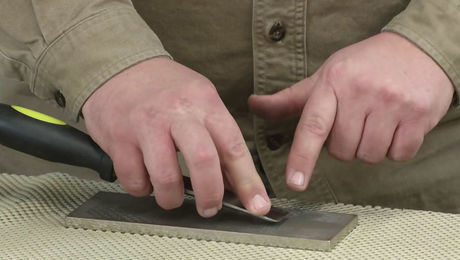
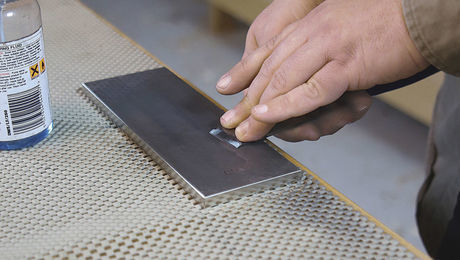
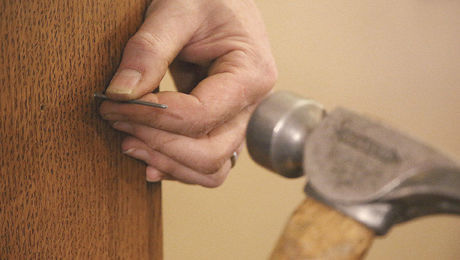
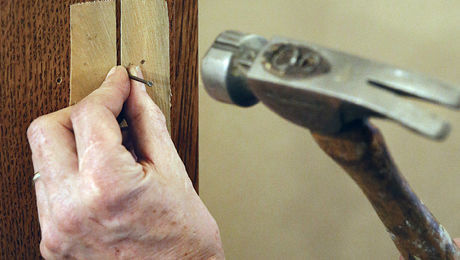












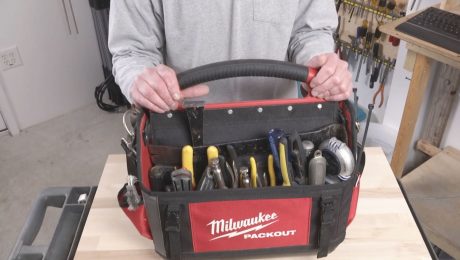


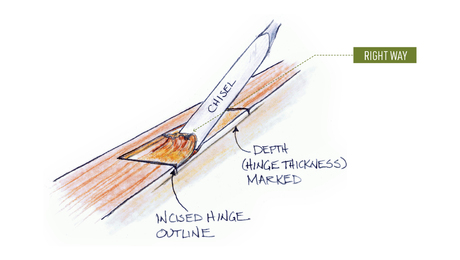










View Comments
I've seen tips for waxing screws but not nails. Wouldn't waxing a nail lessen its gripping power?
If you hold a nail gun perpendicular to the grain of the wood, it is less likely to split than a hand-driven nail. I just finished trimming out a kitchen remodel with two tricky little 1.5" jogs which did not split when attached with 16 gauge nails from a gun. I was prepared to make second pieces and pre-drill them if the power driven ones cracked, but they didn't.
If you look at the tip of a finish nail you will see why. They machine the entire strip at once, so each nail tip is actually wedge-shaped, not pointed. The corners of the wedge are sharp and so the nail tends to cut through the fibers if you have it oriented correctly. If you line the gun up along the grain, the nail will act as a wedge and split the wood, but if you hold the gun perpendicular to the grain, it cuts and doesn't split.
Finish nails, on the other hand, are conical or four sided on their points and so they will split the wood no matter how they are oriented. Mashing the tip down makes it push through the fibers a little better than with a sharp point, but it still doesn't cut them like a power driven brad. And the finish nails tend to be larger in diameter for a given length.
I've driven a lot of finish nails by hand, but mostly what I use them for now is finding studs behind drywall. It's nice to know where to power drive those top nails on a 4.25" high base trim board. I don't find stud finders to be very reliable with 5/8" sheetrock down near the bottom plate. Finish nails are nice because they slide in and out without messing up the drywall too badly.
Good job you done here!
I really appreciate your post. Well done!!
Excellent work you done here!